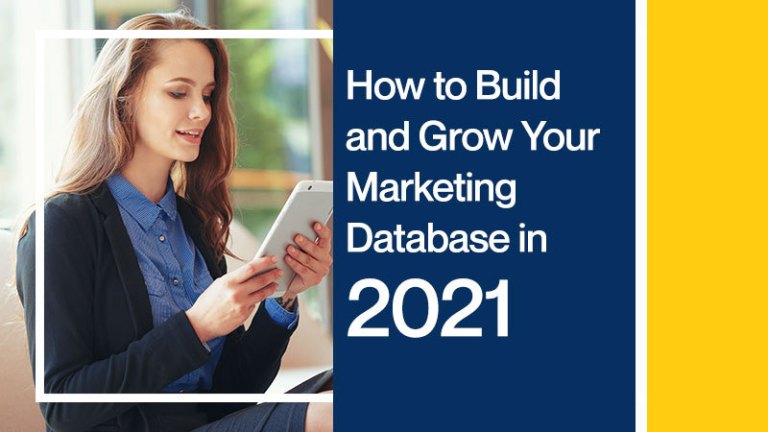To say that 2020 was a year of ups and downs is putting it lightly. It was especially turbulent if you are a business owner. Your company likely had to contend with some major upheavals, stressors, and challenges.
But it’s a new year, and as we celebrate the deployment of the first COVID-19 vaccines, we’re all hoping that we might be seeing the faintest light at the end of the tunnel. 2021 will be another year of reinvention and, we can all hope, a better and brighter one for the growth of our businesses.
Today, we’d like to share some of our favorite tips on how to grow and build your marketing database this 2021.
Define your objectives.
The first step is to have clear, measurable goals. Without them, it’s easy for your marketing project to derail from your original expectations. Here are some questions to ask yourself before building a marketing database.
- Are you building a database for customers, prospects, or both?
- What will the database be used for – analysis, campaign management, or both?
- What kind of reporting is required?
- Who will be using your database?
- What programs does your database need to support?
Related: More Than a Leads List: How Data Impacts ABM, According to Research
Normalize your data.
If you’ve used a database before, you know the frustrations of having redundant data. Inconsistent data complicates queries and causes confusion among your marketing teams. Fortunately, there is a way to prevent this from happening and that’s by normalizing your data. The areas to focus on include code fields, common output structures, and address data.
Keep your database simple.
If this is your first marketing database, keep things simple. This will make it easier to support your marketing program and reach success with your goals. As you get more comfortable using a database for marketing purposes, you can make your databases more complex. But even with experience, you still want to aim for a simplified database that is easy to implement, understand, and track.
Set measurable objectives.
Most businesses opt for a marketing database to keep track of their prospects and customers, gather valuable information on their audiences, and manage ad campaign spending. For example, when you analyze and profile your customers, you can be more selective in who you send mail to. Or, with more accurate targeting, you can show your ads to the right groups of people.
Related: A Step-by-step Guide to Building and Profiling the Right B2B Leads List
Direct Connections
Effectively communicating your brand and promoting your products and services on social media is no longer just about regularly posting to drive traffic. Engagement and direct communication are still very important in social media strategy.
One way to meaningfully connect with your customers and prospects is through direct messaging outreach on Instagram and other platforms. Moreover, direct messaging, engaging in comments, and responding to outreach on social media is also quite vital.
If you’re using social media to promote your brand, remember that you cannot let your page simply be an electronic billboard where users can expect the best of both worlds: content and engagement.
Conclusion
Like virtually all marketing activities, building a marketing database takes time, and you shouldn’t expect a huge pile of sales leads from the first communication that you send out. But over months and years, as your database grows and people become familiar with your brand and products, it will generate a steady supply of leads.




